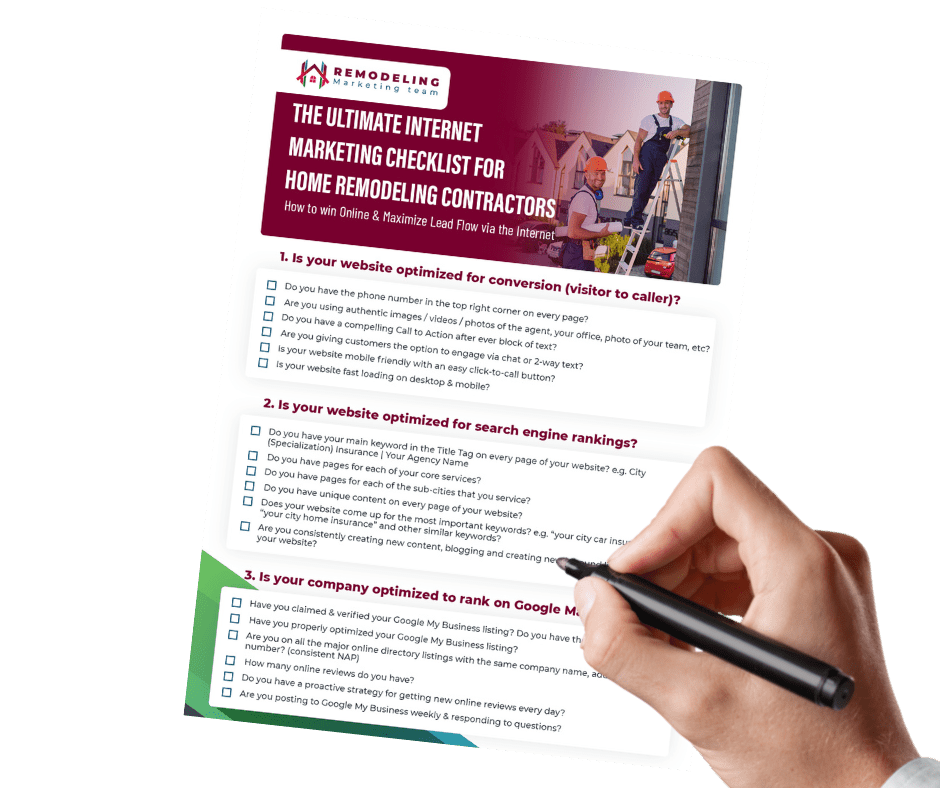Effective communication is pivotal in any home remodeling business. It underpins every facet of project management, from enhancing team dynamics to ensuring client satisfaction and fostering long-term business relationships. This guide offers comprehensive strategies to optimize both internal team interactions and external client communications. Adhering to these principles ensures each project reflects the professionalism and attention to detail for which your business strives.
Key Takeaways: Enhancing Communication in Home Remodeling
- Critical Role of Internal Communication: Effective internal communication is essential for seamless project management. Regular team meetings and advanced project management tools like Trello or Asana help keep team members aligned, improve task management, and ensure projects stay on track.
- Foundation of Client Trust: Clear and transparent communication with clients from the start builds trust and reduces misunderstandings. Utilize detailed consultations to set expectations and maintain regular updates via emails or meetings to keep clients engaged and satisfied throughout the project.
- Importance of Technological Integration: Embracing modern communication tools enhances efficiency and clarity. Implementing comprehensive CRM systems and using platforms like Slack or Microsoft Teams can improve information flow and ensure all stakeholders are well-informed.
- Legal and Ethical Standards: Upholding legal and ethical standards in communication safeguards the business and enhances its reputation. Regular training on data security and a commitment to transparent communication are crucial.
- Power of Visual Tools: Visual aids significantly improve understanding and engagement. Utilizing CAD software for client presentations or creating infographics for team meetings can help convey complex information in an understandable and engaging manner.
- Continuous Improvement and Feedback: Encourage a culture of continuous learning and improvement by regularly updating skills, engaging with industry innovations, and soliciting feedback from clients and team members. This proactive approach helps refine practices and boost overall business success.
Elevating Team Efficiency Through Robust Internal Communication
Internal communication is crucial for the efficient management of home remodeling projects. It ensures that all team members understand their responsibilities and the project’s objectives, which is essential for maintaining workflow consistency and project pace. Effective internal communication helps preempt problems, allows for smoother task management, and fosters a positive, productive work environment.
Strategies for Improvement:
- Structured Team Meetings: Regularly scheduled meetings help keep team members aligned with ongoing projects by providing updates and resolving any emerging issues.
- Advanced Project Management Tools: Utilizing project management software can streamline task assignments, track progress, and ensure that deadlines are met, keeping projects on schedule and within budget.
Building Client Trust Through Transparent External Communication
Transparent communication with clients is foundational to building trust and ensuring smooth project execution. From the initial consultation through to the completion of the project, maintaining an open line of communication helps to manage expectations, mitigate misunderstandings, and enhance overall client satisfaction. This ongoing engagement not only secures current client relationships but also boosts the likelihood of referrals.
Strategies for Improvement:
- Detailed Initial Consultations: Clearly define the scope, timeline, and budget at the beginning to avoid future conflicts.
- Ongoing Communication Channels: Regular updates through emails, calls, or in-person meetings keep clients well-informed about the progress of their projects.
Leveraging Technology to Enhance Communication
In today’s digital world, the right technological tools are vital for effective communication across all levels of a remodeling project. These tools enhance clarity, improve coordination, and facilitate a more dynamic exchange of ideas and updates between project managers, team members, and clients.
Strategies for Improvement:
- Comprehensive CRM Systems: A robust CRM system helps organize and track all client communications, ensuring all team members have the latest information at their fingertips.
- Utilize Integrated Communication Platforms: Platforms like Slack or Microsoft Teams promote real-time internal communication, while client portals provide clients with continuous access to project updates, fostering transparency and trust.
Upholding Legal and Ethical Communication Standards
Adhering to legal and ethical standards in communication is crucial not just for compliance but for maintaining the integrity and reputation of your business. Ethical communication practices build a foundation of trust with clients and colleagues alike and safeguard the business against legal and reputational risks.
Strategies for Improvement:
- Rigorous Training in Data Security: Conduct regular training sessions on the importance of data security and legal compliance to ensure all team members are up to date on the latest practices.
- Commitment to Ethical Practices: Promote a culture of honesty and integrity where all communications are transparent and straightforward, and expectations are clearly set and met.
Using Visuals to Reinforce Communication
Visual tools are an effective way to enhance comprehension and engagement in both client interactions and team meetings. Well-chosen images and interactive tools can help clarify complex concepts, showcase design plans, and illustrate project timelines, making them indispensable in the communication toolkit.
Strategies for Improvement:
- Interactive Visuals for Client Meetings: Use CAD software and virtual reality to provide clients with realistic previews of proposed designs, which can help in decision-making.
- Informative Infographics for Team Alignment: Implement infographics and flowcharts to clearly communicate project timelines, processes, and roles during team meetings.
Conclusion:
By mastering sophisticated communication strategies, home remodeling professionals ensure that their projects are not only successful in terms of outcome but also in process. Effective communication fosters a collaborative environment, enhances client and team satisfaction, and solidifies the business’s reputation for excellence. Following these guidelines, your business can rise above the competition and achieve sustained success.
FAQs: Effective Communication in Home Remodeling
Why is internal communication important in home remodeling projects?
Effective internal communication ensures that all team members are aligned with the project’s objectives, understand their roles, and are prepared to execute their tasks efficiently. It helps in managing tasks effectively, preempting problems, and maintaining a positive work environment.
How can transparent communication with clients enhance a remodeling project?
Transparent communication helps to set and manage expectations, prevents misunderstandings, and keeps the client informed about the progress of their project. This not only builds trust but also enhances client satisfaction, potentially leading to repeat business and referrals.
What are some recommended tools for improving project management and communication?
Project management tools like Trello or Asana can help in tracking tasks and deadlines, while CRM systems ensure all client interactions are documented and accessible. Communication platforms like Slack or Microsoft Teams facilitate real-time updates and discussions among team members.
How does adhering to legal and ethical standards impact a remodeling business?
Compliance with legal and ethical standards protects the business from potential legal issues and boosts its reputation by demonstrating a commitment to integrity and professionalism. Regular training on these standards is essential to maintain compliance and uphold business integrity.
What role do visual tools play in client communication?
Visual tools like CAD software and virtual reality setups can make client presentations more engaging and informative, helping clients better understand proposed designs and make informed decisions. They are particularly useful for clarifying complex concepts and illustrating detailed project plans.
Can technology replace face-to-face communication in home remodeling?
While technology can enhance communication efficiency and clarity, face-to-face interactions are still crucial for building personal relationships and trust with clients. Technology should be used to complement, not replace, personal interactions in client management.
What strategies can be implemented to keep a remodeling project on track?
Regular team meetings, clear task assignments, and the use of project management software can help keep a project on track. Additionally, setting realistic timelines, ensuring all team members have access to necessary resources, and maintaining open lines of communication are key.
How can a remodeling business ensure continuous improvement?
Encouraging a culture of feedback, where team members and clients can share their insights and suggestions, is essential for continuous improvement. Regularly reviewing and updating business practices based on this feedback helps in refining operations and enhancing service quality.
By addressing these common questions, home remodeling professionals can better understand the importance of effective communication and strategic use of tools in achieving successful project outcomes and building lasting client relationships.
This article is a collaboration between Carl Willis and OpenAI’s ChatGPT. Created on April 15, 2024, it combines AI-generated draft material with Willis’s expert revision and oversight, ensuring accuracy and relevance while addressing any AI limitations.






